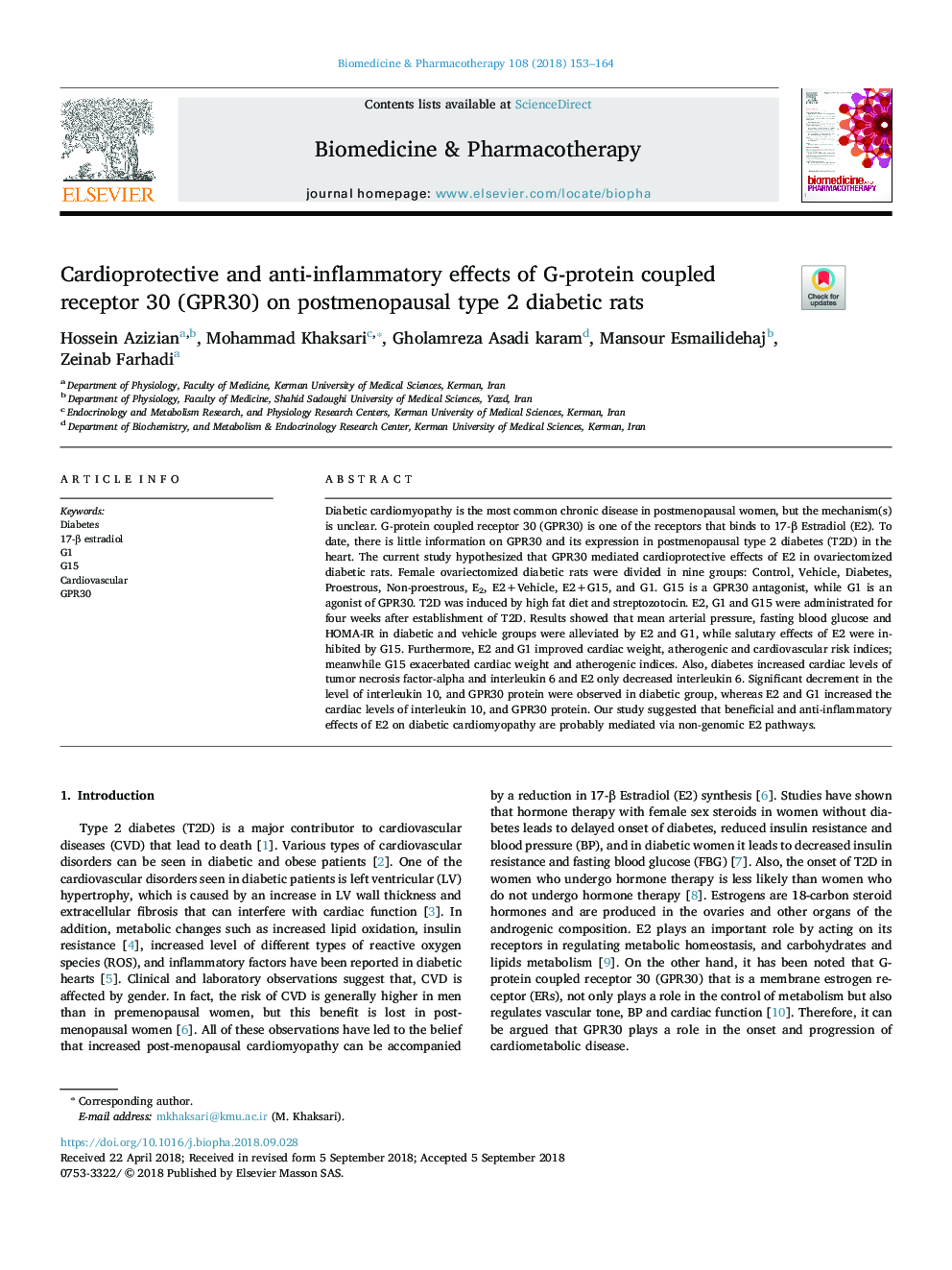| Article ID | Journal | Published Year | Pages | File Type |
|---|---|---|---|---|
| 10158305 | Biomedicine & Pharmacotherapy | 2018 | 12 Pages |
Abstract
Diabetic cardiomyopathy is the most common chronic disease in postmenopausal women, but the mechanism(s) is unclear. G-protein coupled receptor 30 (GPR30) is one of the receptors that binds to 17-β Estradiol (E2). To date, there is little information on GPR30 and its expression in postmenopausal type 2 diabetes (T2D) in the heart. The current study hypothesized that GPR30 mediated cardioprotective effects of E2 in ovariectomized diabetic rats. Female ovariectomized diabetic rats were divided in nine groups: Control, Vehicle, Diabetes, Proestrous, Non-proestrous, E2, E2+Vehicle, E2+G15, and G1. G15 is a GPR30 antagonist, while G1 is an agonist of GPR30. T2D was induced by high fat diet and streptozotocin. E2, G1 and G15 were administrated for four weeks after establishment of T2D. Results showed that mean arterial pressure, fasting blood glucose and HOMA-IR in diabetic and vehicle groups were alleviated by E2 and G1, while salutary effects of E2 were inhibited by G15. Furthermore, E2 and G1 improved cardiac weight, atherogenic and cardiovascular risk indices; meanwhile G15 exacerbated cardiac weight and atherogenic indices. Also, diabetes increased cardiac levels of tumor necrosis factor-alpha and interleukin 6 and E2 only decreased interleukin 6. Significant decrement in the level of interleukin 10, and GPR30 protein were observed in diabetic group, whereas E2 and G1 increased the cardiac levels of interleukin 10, and GPR30 protein. Our study suggested that beneficial and anti-inflammatory effects of E2 on diabetic cardiomyopathy are probably mediated via non-genomic E2 pathways.
Related Topics
Health Sciences
Medicine and Dentistry
Oncology
Authors
Hossein Azizian, Mohammad Khaksari, Gholamreza Asadi karam, Mansour Esmailidehaj, Zeinab Farhadi,
